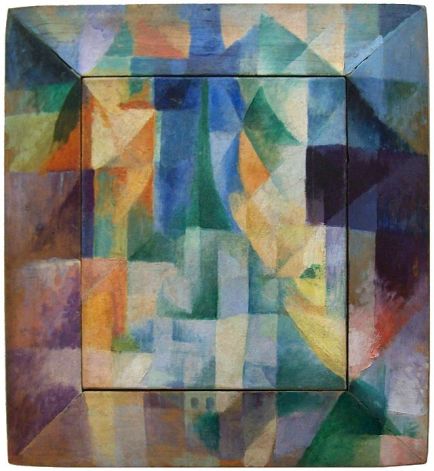The most extreme forms of Cubism were not those practiced by Picasso and Braque, who resisted total abstraction. Other Cubists, by contrast, especially František Kupka, and those considered Orphists by Apollinaire (Delaunay, Léger, Picabia and Duchamp), accepted abstraction by removing visible subject matter entirely. Kupka’s two entries at the 1912 Salon d’Automne, Amorpha-Fugue à deux couleurs and Amorpha chromatique chaude, were highly abstract (or nonrepresentational) and metaphysical in orientation. Both Duchamp in 1912 and Picabia from 1912 to 1914 developed an expressive and allusive abstraction dedicated to complex emotional and sexual themes. Beginning in 1912 Delaunay painted a series of paintings entitled Simultaneous Windows, followed by a series entitled Formes Circulaires, in which he combined planar structures with bright prismatic hues; based on the optical characteristics of juxtaposed colors his departure from reality in the depiction of imagery was quasi-complete. In 1913–14 Léger produced a series entitled Contrasts of Forms, giving a similar stress to color, line and form. His Cubism, despite its abstract qualities, was associated with themes of mechanization and modern life. Apollinaire supported these early developments of abstract Cubism in Les Peintres cubistes (1913), writing of a new “pure” painting in which the subject was vacated. But in spite of his use of the term Orphism these works were so different that they defy attempts to place them in a single category.
Also labeled an Orphist by Apollinaire, Marcel Duchamp was responsible for another extreme development inspired by Cubism. The Ready-made arose from a joint consideration that the work itself is considered an object (just as a painting), and that it uses the material detritus of the world (as collage and papier collé in the Cubist construction and Assemblage). The next logical step, for Duchamp, was to present an ordinary object as a self-sufficient work of art representing only itself. In 1913 he attached a bicycle wheel to a kitchen stool and in 1914 selected a bottle-drying rack as a sculpture in its own right.
